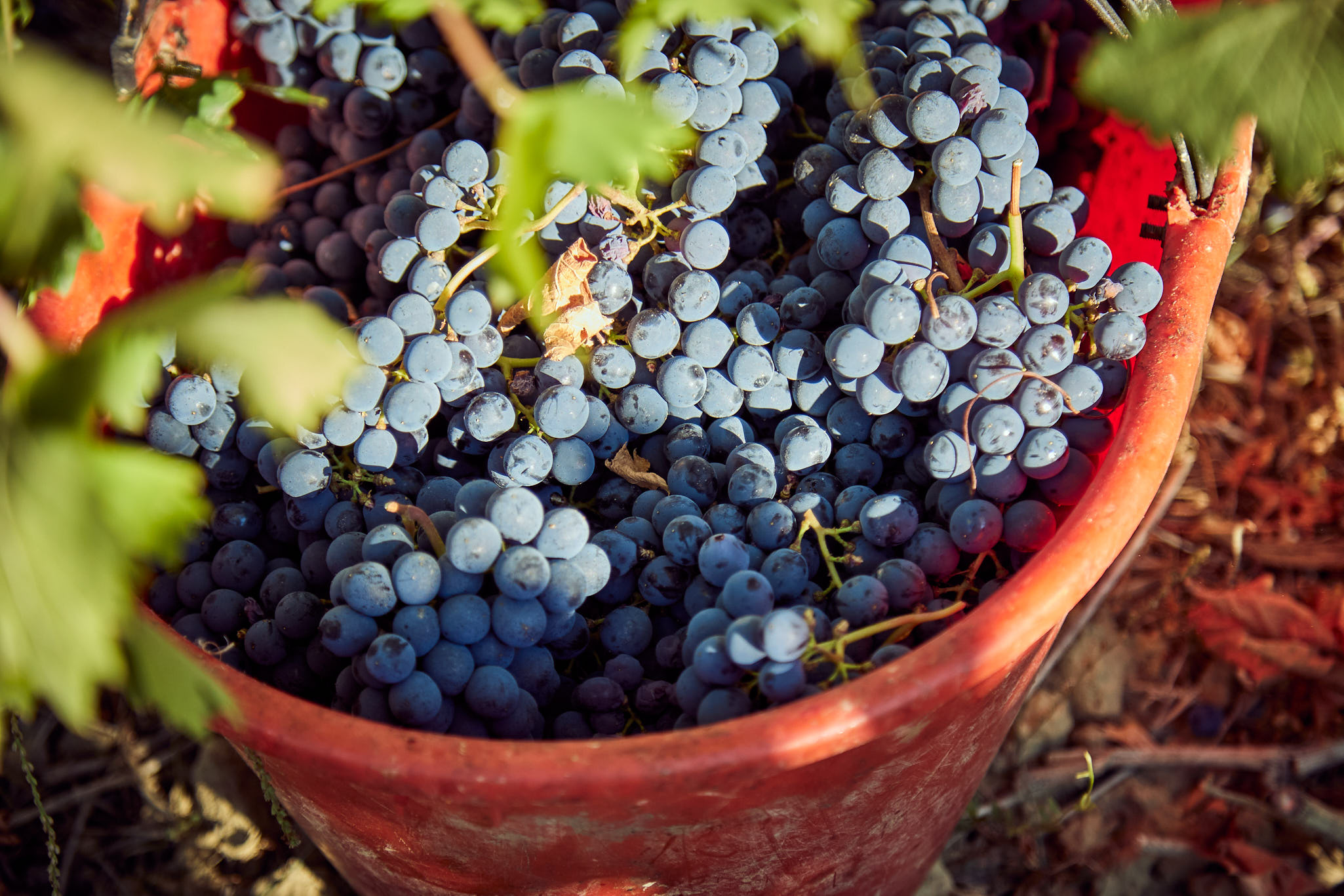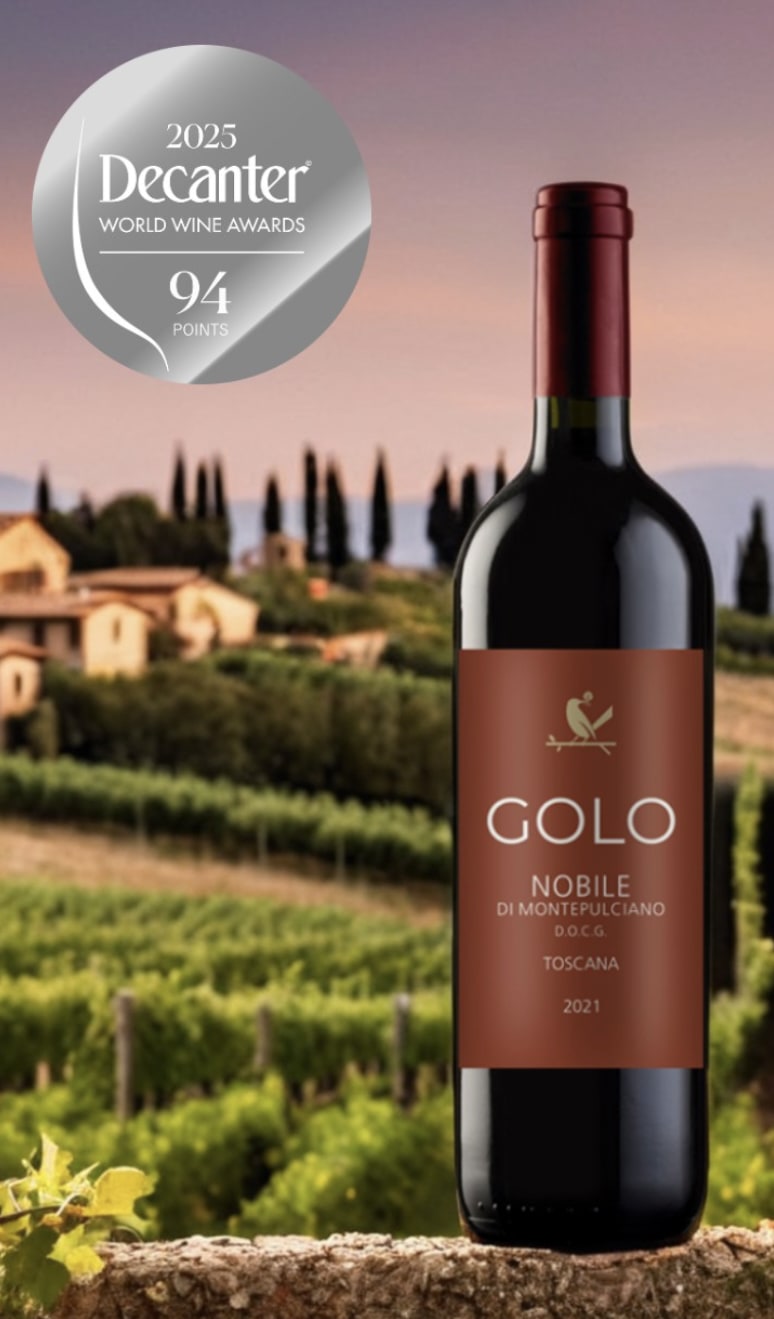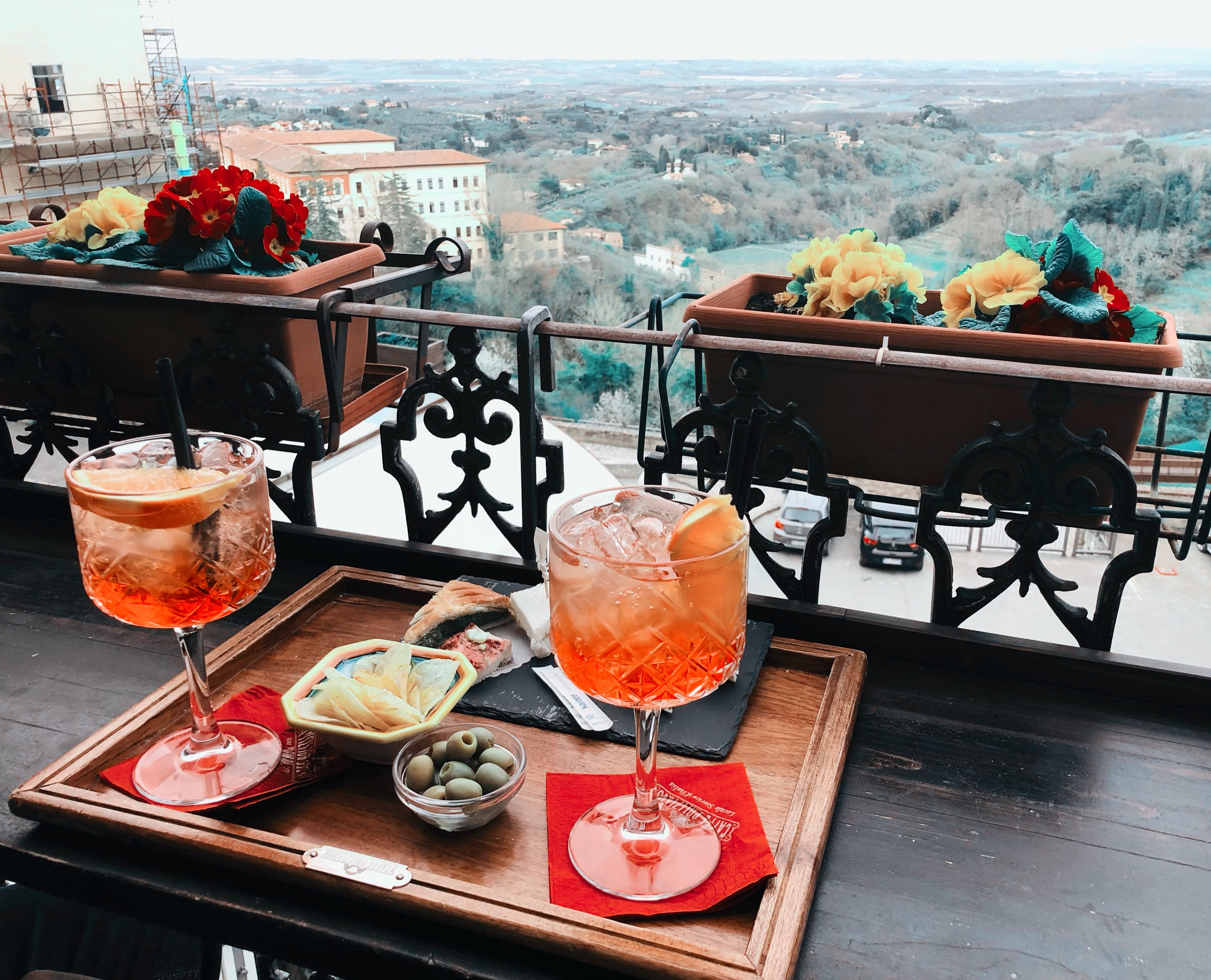Wine Tasting Course Guide for Beginners: Master the Basics 2025
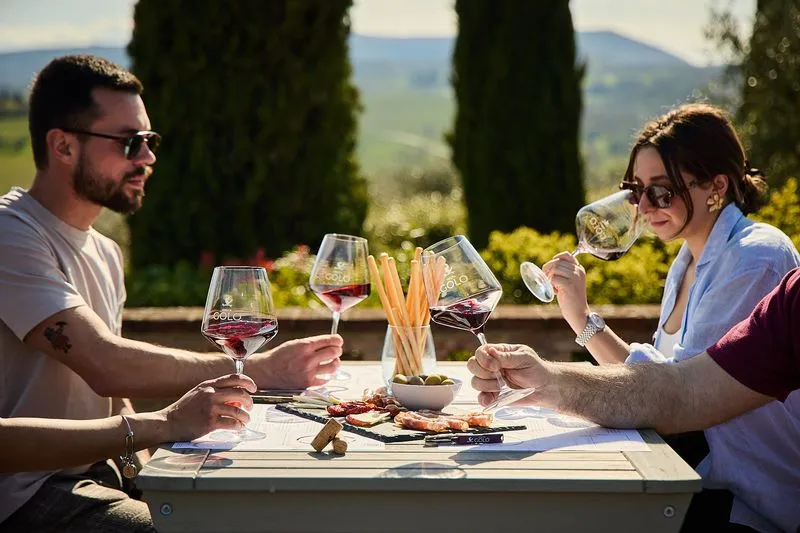
Wine tasting is captivating more enthusiasts than ever in 2025, blending sophistication, discovery, and social connection. Whether you are attending gatherings, traveling, or simply expanding your palate, the world of wine offers endless possibilities for enjoyment and learning.
Taking a wine tasting course is your gateway to a richer appreciation of every glass. Mastering the basics will elevate your confidence, help you understand key techniques, and deepen your pleasure in every tasting experience.
Ready to begin your journey? This guide walks you step by step through essential wine knowledge, tasting preparation, practical techniques, flavor interpretation, and ways to further expand your wine adventure. Let’s get started.
Understanding Wine: Types, Regions, and Styles
Wine is a world of endless discovery, and a well-structured wine tasting course always begins by grasping the fundamentals. Before diving into tasting, it is essential to understand the core types, regions, styles, and key elements that shape every bottle. This foundation will empower any beginner to approach wine with confidence and curiosity.
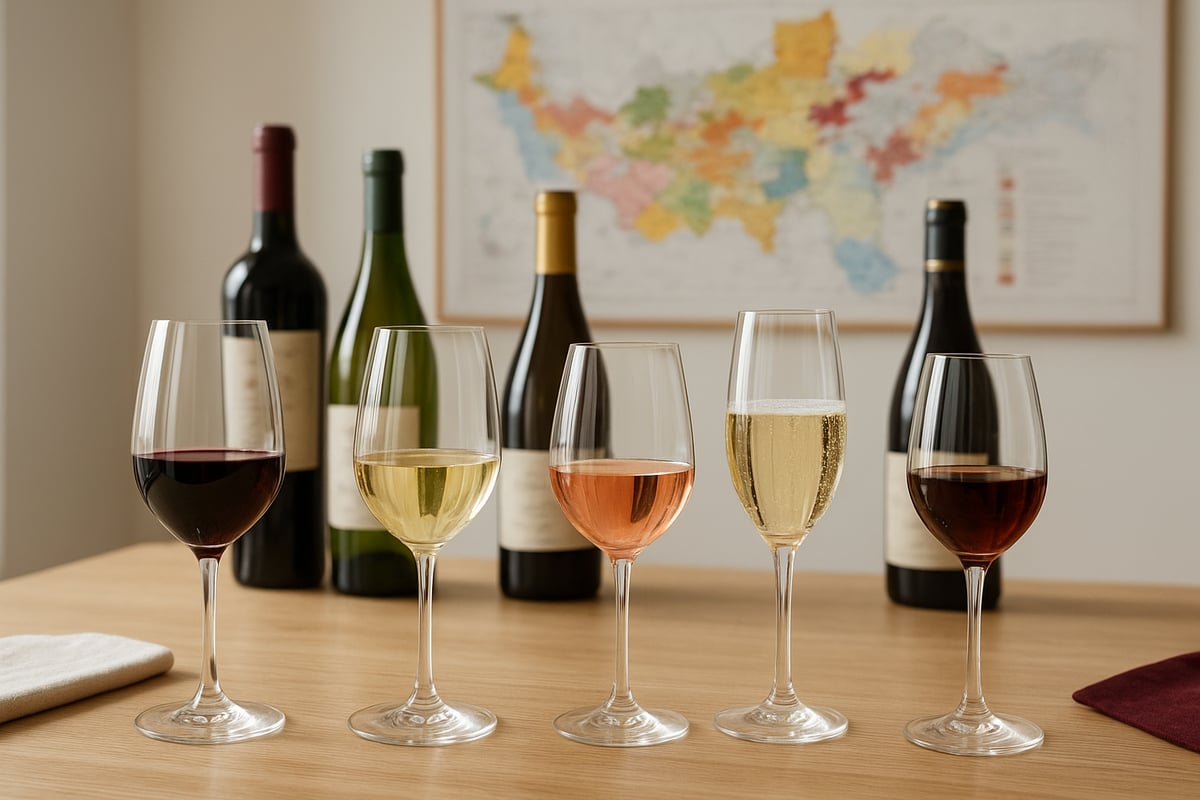
The Main Types of Wine: Red, White, Rosé, Sparkling, and Fortified
Every wine tasting course introduces the principal wine types, each with distinct characteristics.
- Red wines (e.g., Cabernet Sauvignon, Merlot) are made with dark-skinned grapes and fermented with skins, resulting in deeper color and tannins.
- White wines (e.g., Chardonnay, Sauvignon Blanc) are typically crafted from green grapes, offering crisp, refreshing profiles.
- Rosé wines are made by briefly contacting red skins with juice, producing a pink hue and light body.
- Sparkling wines (like Prosecco or Champagne) undergo secondary fermentation for bubbles.
- Fortified wines (e.g., Port, Sherry) have added spirits, increasing alcohol and richness.
Color, body, and alcohol content vary by type, influenced by grape variety and winemaking methods. For example, Pinot Noir from Burgundy is lighter and more delicate than Merlot from Bordeaux, highlighting how grape and region shape style in any wine tasting course.
Key Wine Regions Around the World
A comprehensive wine tasting course explores both classic and emerging wine regions. Notable historic areas include Bordeaux and Burgundy in France, Tuscany in Italy, Napa Valley in California, Rioja in Spain, and Marlborough in New Zealand. Each region is defined by its unique terroir—soil, climate, and local practices—which deeply influence wine character.
In 2025, English sparkling wines and South African Chenin Blanc are gaining global recognition. For a closer look at how local culture shapes wine, explore Discover the Wine Culture of the Territory. Compare Tuscan Sangiovese to its Californian counterpart and notice how climate and soil create distinct flavors, a lesson every wine tasting course emphasizes.
Wine Styles and Labeling
Understanding wine styles is crucial in any wine tasting course. Common styles include:
- Dry: Minimal residual sugar, crisp finish.
- Sweet: Noticeable sugar, dessert-like.
- Off-dry: Slight sweetness, balanced acidity.
- Sparkling: Effervescent, lively bubbles.
- Dessert: Rich, often fortified, served after meals.
Wine labels can be confusing. Key elements to decode include vintage (year harvested), varietal (grape type), region, and producer. For example, a bottle labeled “2019 Marlborough Sauvignon Blanc” tells you the grape, place, and year. Decoding labels helps you select wines confidently during any wine tasting course.
The Importance of Vintage and Aging
Vintage, the year the grapes were harvested, can greatly impact flavor. Weather conditions in a specific year affect ripeness, acidity, and balance. Aging, whether in bottle or barrel, transforms wine structure and taste—young wines offer fresh fruit, while aged wines develop complex aromas like earth, spice, or leather.
For instance, a 2016 Bordeaux will display more integrated tannins and secondary flavors compared to a vibrant, fruit-forward 2021. Every wine tasting course teaches you to appreciate these differences, enhancing your ability to evaluate and enjoy wine.
Wine Tasting Trends in 2025
Today’s wine tasting course must address evolving trends. There is a marked rise in organic, biodynamic, and natural wines, reflecting consumer interest in sustainability. The Wine Intelligence 2024 report notes more wine lovers are seeking out local producers and eco-friendly practices.
Expect to encounter a broader range of sustainably made wines in any modern wine tasting course. This shift not only benefits the planet but also introduces exciting, authentic flavors for both new and seasoned tasters.
Preparing for Your First Wine Tasting
Embarking on your first wine tasting course is both exciting and rewarding. With the right preparation, you will create an enjoyable atmosphere that enhances learning and appreciation. Let’s break down the steps to set the stage for a memorable experience.
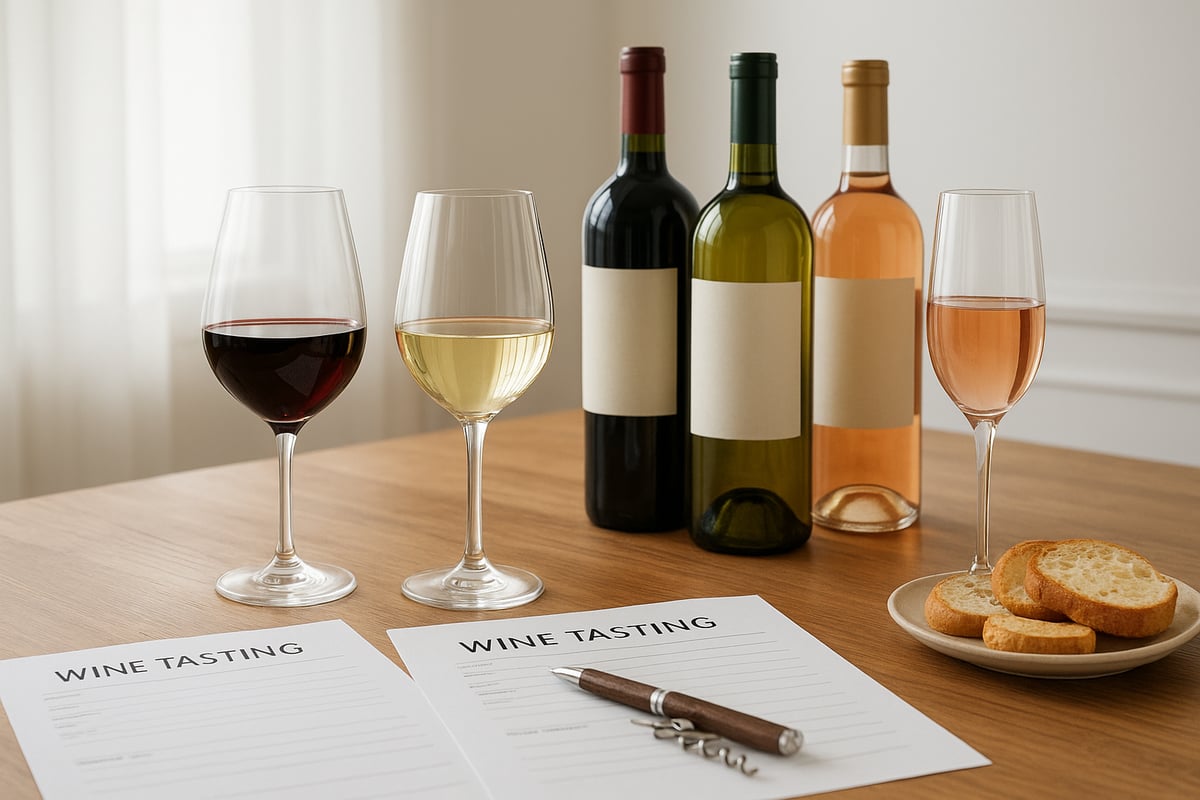
Setting Up the Ideal Tasting Environment
A successful wine tasting course begins with an optimal environment. Choose a space with neutral lighting to accurately observe wine color and clarity. Keep distractions to a minimum so participants can focus on aromas and flavors.
Temperature plays a crucial role in showcasing each wine’s character. Serve white wines chilled, reds at room temperature, and sparkling wines well chilled. Use appropriate glassware: Bordeaux glasses for robust reds, Burgundy for delicate reds, and flutes for sparkling wines. If you only have one type, a universal glass is suitable for mixed tastings.
Selecting Wines for Beginners
Selecting the right wines is a key step in organizing a beginner-friendly wine tasting course. Aim for a diverse yet approachable lineup—three to five bottles covering red, white, and rosé. Entry-level varietals such as Sauvignon Blanc, Pinot Noir, and a dry Rosé offer a range of flavors without overwhelming the palate.
Quality does not require a high price tag. Many excellent options are available for under $20. For additional guidance on choosing wines and tasting techniques, consider exploring the Wine 101 Course by Wine Folly.
Essential Tools and Supplies
Equipping your wine tasting course with the right tools ensures a smooth experience. Essential supplies include:
- Corkscrew or wine opener
- Decanter for aerating reds
- Spittoon for responsible tasting
- Tasting sheets to record impressions
- Water for rinsing glasses and cleansing the palate
- Bread or plain crackers for neutral snacking
Each item has a purpose, from enhancing aromas to keeping your palate refreshed.
Preparing Your Palate
To fully benefit from a wine tasting course, prepare your palate in advance. Avoid strong flavors like coffee, spicy foods, or mint before the session. Drink water to stay hydrated and use palate cleansers such as bread or crackers between tastings.
A neutral palate helps you detect subtle differences in aroma and taste, making the experience more insightful.
Tasting Etiquette and Group Dynamics
Wine tasting is both a personal and social journey. Pour small amounts to allow everyone multiple samples. Encourage sharing impressions, but respect individual preferences and opinions.
In group settings, rotating hosts for regular tasting events can add variety and foster community. By following these etiquette guidelines, everyone will feel comfortable and engaged throughout the course.
The Wine Tasting Process: Step-by-Step for Beginners
Embarking on your first wine tasting course can feel both exciting and overwhelming. By breaking the process into clear, manageable steps, you will build confidence and sharpen your palate. Whether tasting solo or with friends, follow these guidelines to unlock the full potential of every glass.
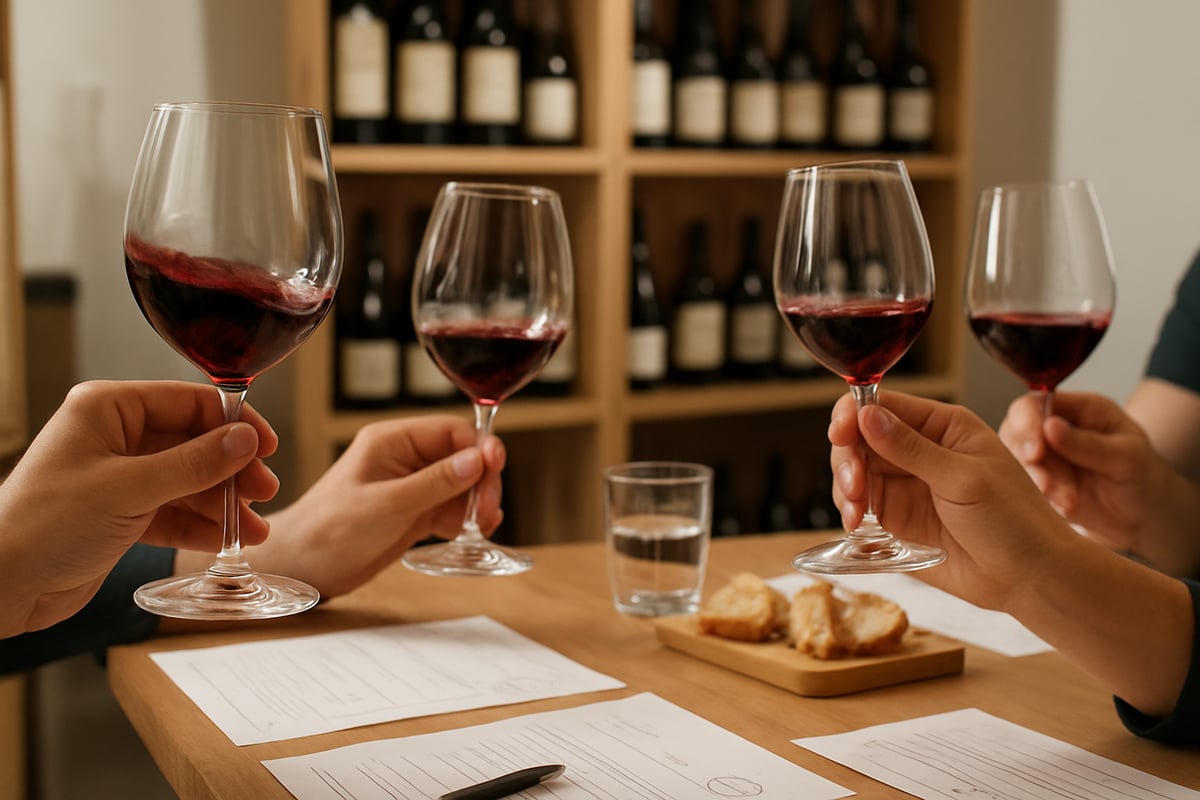
Step 1: Observing the Wine
Start every wine tasting course by visually inspecting your wine. Hold the glass against a white background and tilt it slightly. Examine the color—is it pale straw, deep ruby, or a delicate pink? Clarity is equally important. Is the wine brilliantly clear, slightly hazy, or opaque?
Next, look for viscosity or "legs." Swirl the wine gently and watch how droplets form and slide down the glass. Thicker legs can suggest higher alcohol or sugar content, while lighter legs may indicate a fresher style.
Visual cues can reveal much about a wine's age and variety. For example, young red wines like Cabernet Sauvignon often show vibrant purple hues, while older reds develop brick or garnet tones. Comparing a Pinot Noir from Burgundy with a Merlot from California in your wine tasting course will reveal how grape and region influence color and intensity.
Step 2: Swirling and Sniffing
Swirling is a key ritual in any wine tasting course. It helps release the wine’s volatile aroma compounds by exposing more surface area to oxygen. Hold your glass by the stem and gently move your wrist in small circles. Beginners may find it easier to keep the base of the glass on the table.
Bring the glass to your nose and inhale deeply. Try to identify primary aromas like fruit (apple, cherry), secondary notes from winemaking (vanilla, toast), and tertiary scents from aging (earth, leather). Sauvignon Blanc often gives fresh citrus and green apple, while oaked Chardonnay reveals vanilla and butter.
Take your time—aroma detection is a skill that develops with practice. In a wine tasting course, comparing different wines side by side enhances your ability to distinguish subtle differences.
Step 3: Tasting and Savoring
Now, take a small sip and let the wine coat your palate. Every wine tasting course follows four tasting stages:
- Attack: The first impression as the wine enters your mouth.
- Evolution: How flavors develop and change while you hold the wine.
- Finish: The length and quality of flavors after swallowing or spitting.
- Aftertaste: Lingering sensations or flavors that remain.
Assess the balance of sweetness, acidity, tannin, alcohol, and body. For example, a high-acid Riesling feels crisp and refreshing, while a full-bodied Shiraz is bold and dense.
To deepen your experience, explore unique wines. You might taste a Golo Rosso di Montepulciano—The Birth of a New Star during your wine tasting course to discover how production style shapes flavors. Remember, savoring is about noticing texture and complexity as well as taste.
Step 4: Describing and Recording Impressions
Articulating your observations is a crucial part of any wine tasting course. Use a tasting sheet to record appearance, aromas, flavors, and your overall impression. This habit will sharpen your memory and help track your progress.
Begin with simple vocabulary. Terms like "fruity," "earthy," "tannic," "crisp," or "oaky" are easy to understand. Over time, expand your lexicon to include descriptors such as "black cherry," "graphite," "floral," or "spicy."
Consistent note-taking will help you recognize patterns and preferences. Many wine tasting course participants find that writing down impressions accelerates learning and builds confidence for future tastings.
Common Mistakes to Avoid
Even in a structured wine tasting course, beginners often make similar errors. Be mindful of these common pitfalls:
- Pouring too much wine per glass
- Rushing through the steps without reflection
- Ignoring the wine’s aroma before tasting
- Failing to use water or palate cleansers between samples
- Comparing wines of vastly different styles side by side
Palate fatigue is real. According to a Wine Folly survey in 2023, 60% of newcomers report sensory overload after tasting more than five wines in one session. In your wine tasting course, pace yourself to maintain sharp senses and a clear mind.
Building Confidence Through Practice
The journey to mastery in a wine tasting course is built on repetition and curiosity. Try themed tastings—focus on a single varietal, region, or style. Host blind tastings to challenge your memory and perception, or organize a “guess the varietal” night for friendly competition.
Tips for steady progress:
- Taste regularly, but avoid overwhelming your palate
- Join tasting groups to share impressions and learn from others
- Experiment with food pairings to see how flavors interact
With each session, your skills will grow. The more you practice, the richer and more rewarding your wine tasting course experience will become.
Interpreting Flavors and Aromas: Developing Your Palate
Unlocking the world of wine flavors is a key step in any wine tasting course. Developing your palate is both an art and a science, and with practice, you will start to recognize subtle notes and aromas in every glass. This journey enhances not only your appreciation but also your confidence as you continue exploring wine.
Flavor Families and Aroma Wheels
A foundational skill in any wine tasting course is learning to identify wine's diverse aroma and flavor families. These include fruit, floral, herbal, spice, earth, and oak. Using an aroma wheel helps beginners expand their vocabulary and pinpoint specific notes.
Here is a simple summary of aroma categories:
| Category | Examples |
|---|---|
| Fruit | Black cherry, citrus, apple |
| Floral | Rose, violet, orange blossom |
| Herbal | Mint, eucalyptus, grass |
| Spice | Pepper, clove, cinnamon |
| Earth | Mushroom, wet leaves, tobacco |
| Oak | Vanilla, toast, cedar |
For instance, a Cabernet Sauvignon might reveal black cherry and tobacco, while a Riesling can show lime and jasmine. As you progress through your wine tasting course, practice using the aroma wheel to expand your recognition skills.
How to Identify Wine Faults
An important part of any wine tasting course is learning to detect wine faults. Common issues include cork taint (TCA), which smells like musty cardboard, oxidation, which dulls flavors and adds a sherry-like note, reduction, which can smell like rotten eggs, and Brettanomyces, adding barnyard or medicinal aromas.
When tasting, trust your senses. If a wine smells off or lacks freshness, it might be faulty. Recognizing these faults not only protects your enjoyment but also builds your confidence as you navigate tastings. Each wine tasting course will guide you through these common pitfalls, making you a more discerning taster.
The Influence of Terroir and Winemaking
Understanding how terroir and winemaking choices shape flavor is a core lesson in every wine tasting course. Terroir encompasses soil, climate, and vineyard location, all of which influence grape characteristics.
For example, Champagne's chalky soils give its wines crisp minerality, while Sicily's volcanic soils contribute smoky, savory notes. Additionally, winemaking decisions, such as oak aging or malolactic fermentation, add layers of complexity. As you progress in your wine tasting course, compare wines from different regions to appreciate these influences firsthand.
Pairing Wine with Food to Enhance Flavors
A well-designed wine tasting course will also introduce you to the basics of food and wine pairing. The right match can elevate both the wine and the dish. Key principles include balancing acidity, tannin, and sweetness, and deciding whether to complement or contrast flavors.
- Pair high-acid wines, like Sauvignon Blanc, with tangy goat cheese.
- Match tannic reds, such as Chianti, with tomato-based pasta.
- Sweet wines, like Moscato, work well with desserts or spicy foods.
Experimenting with pairings during your wine tasting course will help you discover personal preferences and enhance your overall experience.
Tracking Your Progress
Tracking your palate development is essential for long-term growth in any wine tasting course. Keeping a wine journal or using apps like Vivino and Delectable helps you remember wines you enjoyed and notes about their flavors.
You can also expand your palate and learning by exploring additional resources, such as the Guide to Online Wine Courses by Wine Folly, which offers structured paths for ongoing education. By noting your preferences and experiences, you will become more confident and adventurous in your wine journey.
Wine Tasting Experiences: At Home, Online, and In-Person
Exploring wine tasting goes far beyond the classroom. Today, a wine tasting course can be enjoyed in countless ways, whether you are at home, online, or traveling. Each setting offers a unique opportunity to deepen your understanding, expand your palate, and make learning about wine both accessible and memorable.
Hosting a Home Tasting
Starting your wine journey at home is both practical and enjoyable. Hosting a wine tasting course in your own space allows you to control the pace and select wines that match your curiosity and budget.
- Choose a theme, such as regional varieties or a mix of reds and whites.
- Gather essential supplies: a corkscrew, universal wine glasses, tasting sheets, water, and neutral snacks.
- Invite friends or family to join, encouraging everyone to share impressions and preferences.
By keeping pour sizes modest and rotating hosts, you ensure that each wine tasting course at home remains fun, educational, and approachable for beginners.
Virtual Wine Tastings in 2025
The rise of virtual events has transformed how people participate in a wine tasting course. In 2025, many platforms offer live-streamed tastings, interactive webinars, and curated wine packs delivered to your door. According to Decanter, there has been a 30 percent increase in virtual tastings since 2020.
To join a virtual wine tasting course, register on a reputable platform, order the recommended wines, and prepare your space with proper glassware and tasting sheets. These experiences connect you with experts and fellow enthusiasts worldwide, making wine education more flexible and inclusive than ever.
Visiting Wineries and Tasting Rooms
Nothing compares to the immersive experience of visiting a winery in person. A wine tasting course at a vineyard lets you see the landscape, witness winemaking firsthand, and understand the influence of terroir. Expect guided tastings, behind-the-scenes tours, and the chance to ask detailed questions.
Remember to respect tasting room etiquette: use small pours, cleanse your palate, and engage with staff. For those planning their first visit, Plan Your Winery Visit offers practical tips and options to maximize your experience and ensure your wine tasting course is both enjoyable and informative.
Experience Authentic Tuscan Wine Tasting at Tenuta Golo
For a truly unforgettable wine tasting course, consider Tenuta Golo in Montepulciano, Tuscany. This boutique winery offers immersive tastings of Nobile di Montepulciano DOCG wines, guided tours through 17th-century vineyards, and curated food pairings.
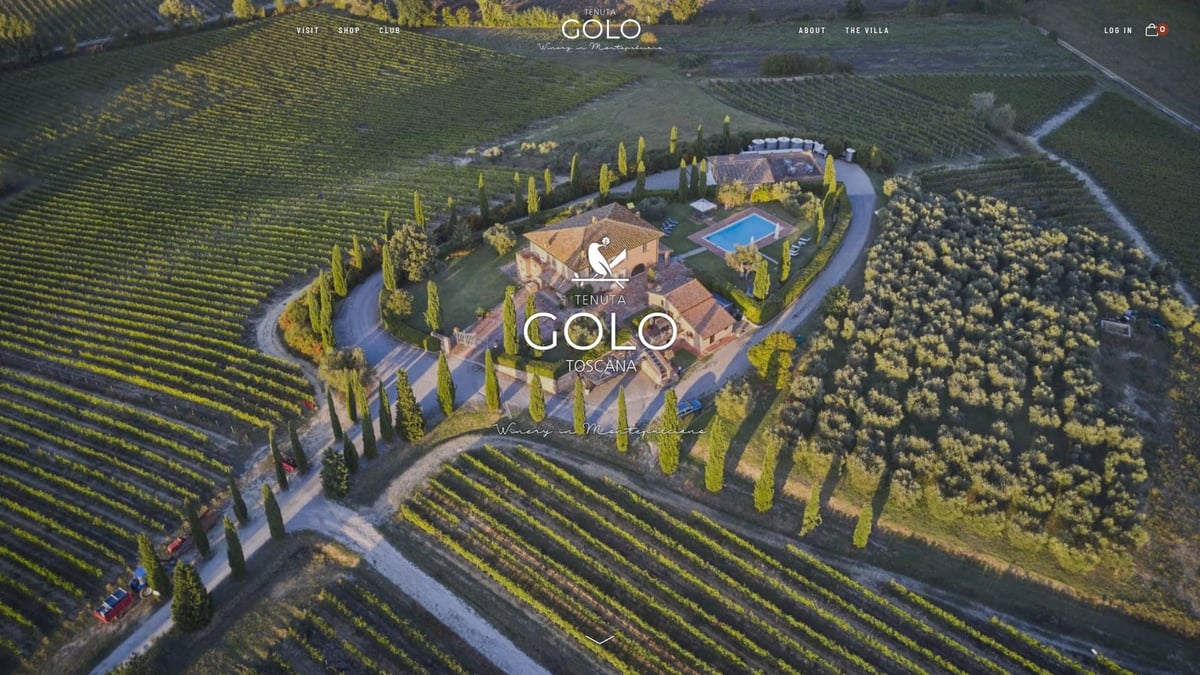
Guests learn about terroir, winemaking, and tasting techniques from passionate hosts, all set against panoramic Tuscan views. Whether you are a beginner or seeking to deepen your appreciation, this experience bridges tradition and modern wine education in a luxurious, authentic setting.
Expanding Your Wine Journey: Courses, Certifications, and Communities
Expanding your wine journey is an exciting step after mastering the basics of wine tasting. Whether you seek formal education or vibrant wine communities, there are many paths to deepen your appreciation and expertise. Let us explore how you can grow beyond your first wine tasting course and become part of a global wine culture.
Structured Wine Courses for Beginners
For those who want a solid foundation, enrolling in a structured wine tasting course is the ideal next step. Courses such as WSET Level 1 or introductory classes from the Court of Master Sommeliers offer guided tastings, clear frameworks, and recognized certifications.
Expect to sample a diverse range of wines, learn systematic tasting methods, and gain practical pairing tips. Many beginners start with a WSET Level 1 & 2 Courses at Grape Experience program, which covers 8–10 wines and essential knowledge in an accessible format. Completing a wine tasting course builds confidence and sets the stage for more advanced exploration.
Free and Online Learning Resources
If you prefer self-paced learning, there is a wealth of free and online materials to supplement your wine tasting course experience. Websites like Wine Folly, GuildSomm, and Master the World offer articles, tasting guides, and interactive tools.
YouTube channels and podcasts provide visual and audio instruction, making it easy to fit wine education into your routine. These resources help reinforce what you learn in a formal wine tasting course and keep you up-to-date with trends.
Joining Wine Clubs and Tasting Groups
Community is a vital part of the wine journey. Joining a wine club or tasting group introduces you to new wines, shared experiences, and expert guidance. Clubs often provide curated selections, educational content, and member events.
For example, Join the Golo Wine Club to receive exclusive wines, tasting notes, and invitations to private tastings. Participating in these groups complements your wine tasting course by offering real-world practice and a supportive network.
Attending Wine Events and Festivals
Wine events and festivals are excellent opportunities to expand your palate and connect with the broader wine community. Major gatherings like Vinitaly or the London Wine Fair feature tastings, workshops, and expert panels. Local festivals offer access to regional specialties and emerging producers.
Prepare in advance by researching event lineups, attending guided tastings, and engaging with winemakers. Attending such events after completing a wine tasting course will help you apply your skills and discover new favorites.
Building Your Home Wine Collection
Starting a home wine collection is a rewarding way to continue your growth after a wine tasting course. Begin with a mixed case of classic varietals, focusing on both reds and whites. Store your bottles in a cool, dark place, and keep a simple tracking system to note tasting dates and impressions.
As your confidence grows, experiment with lesser-known regions and styles. Over time, your collection will reflect your journey and evolving taste.
If you’re feeling inspired to put your new wine tasting skills into practice, there’s no better way to deepen your appreciation than by experiencing an authentic tasting in a truly special setting. At Tenuta Golo, you’ll have the chance to explore historic vineyards, savor expertly crafted Nobile di Montepulciano wines, and learn directly from passionate hosts who love sharing their knowledge with beginners. Imagine walking through sunlit Tuscan vines, tasting each glass with newfound confidence, and soaking in the beauty of Montepulciano. Ready to make your wine journey unforgettable? Book Your Wine Tasting Now


